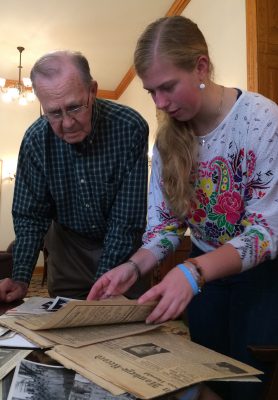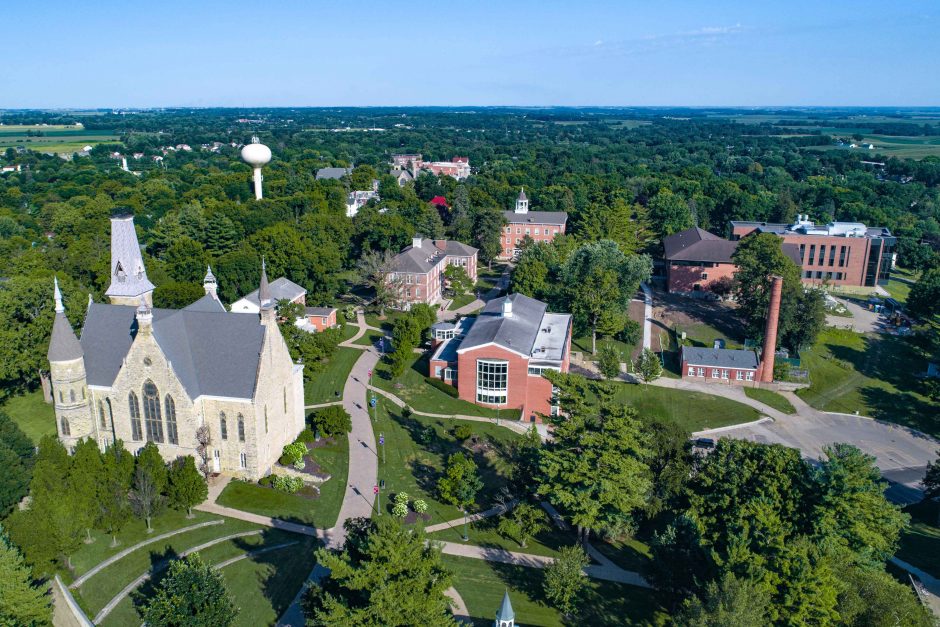Bringing history to life in summer research

CREDIT: Dee Ann Rexroat ’82
Since elementary school, the legacy of our past and how it impacts our future has been something of interest to me. At Cornell I have been able to take this interest and turn it into a passion, with encouragement and aid from professors like Catherine Stewart. When she approached me with the idea of doing a historical research project about Cornell’s campus, I leapt at the opportunity.
The research project was to build a digital map of 10 historically significant campus buildings, using resources in the Cornell archives (I didn’t know we had an archive until this summer). It was exciting to bring the buildings to life in a way that was engaging and accessible to people both at Cornell and not.
For our first building we chose Bowman-Carter Hall, because there was plenty of information about it as well as photos throughout its lifespan. One of the areas that really caught my attention was Bowman’s year and a half-ish span of being the main dormitory for the Naval Flight Preparatory Academy during World War II. Unfortunately, beyond some newspaper clippings and student records, we were unable to really find out what Bowman was like during the Academy.
Then we learned that Darrell Gustaveson, a WWII vet who had lived in Bowman-Carter, was going to visit the campus. I was so excited. Here was a living, breathing, part of history. Mr. Gustaveson attended the Academy from April through August of 1943. Darrell’s son wanted to bring him back to Cornell to show the college some of the memorabilia he had collected, and so that Darrell could revisit the campus where he had spent the first months of his Navy training.
WEB EXTRA – See TV coverage of Darrell Gustaveson’s visit to Cornell, and a video on Hannah Robertson’s summer research
Shortly after meeting all of us who had turned out to greet him in front of Bowman-Carter, Darrell, age 93, made his way up all four flights of steps to his room. There he sat at the desk and reminisced about living in the tiny room with his three roommates, taking early morning warm-up hikes to the Palisades, and attending classes where he learned how to identify planes, studied engineering mathematics, and the like.
During his visit I had the opportunity to share our Naval Flight Preparatory Academy materials with him, including his transcript, which he and his family had never seen before. I asked him questions about his time here at Cornell, and getting that firsthand perspective of Cornell in the 1940s was something that no amount of newspaper clippings or diary entries can match. He reminisced about eating in the Bowman dining hall and spending his free time in the gym playing basketball with the other recruits.
When I thought about bringing the building to life, I had no idea it would mean meeting people like Darrell, let alone recording and preserving his experiences digitally for future historians.
Hannah Robertson ’18 is from Durango, Colorado. She was a part of the Cornell Summer Research Institute, working with Professor of History Catherine Stewart and Brad Kane ’18 to create a digital website for the histories of 10 major historic buildings on campus. Hannah is an English literature major who also participates in various music ensembles, is the head editor for The Cornellian, and is a member of Spiritual Life. This fall, Hannah will be studying in Amman, Jordan, where she plans to pursue her interest in the culture and history of the Middle East.



